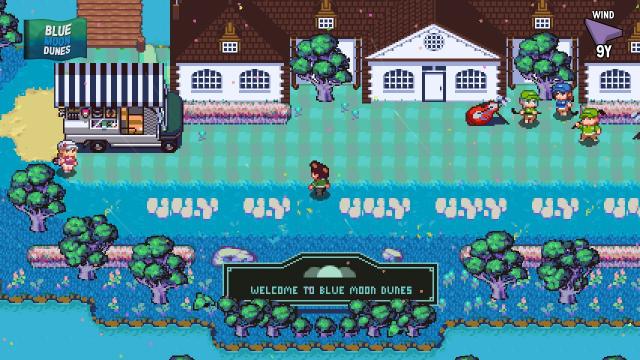Gaming in Australia was already trending upwards, and the latest report from analysts PwC shows local spending on video games could even surpass $5 billion by 2025.
The figures were unveiled in the latest Entertainment & Media Outlook report from PwC. It’s a chunky document full of data and projections for all screen industries in Australia, including film, broadcast TV, streaming, video games and, most recently, esports.
It’s interesting not just for its various projections, but because it provides a consistent data point about the size and health of the local gaming industry. Last year’s report — before COVID was a major consideration — found Aussies spent $3.175 billion on video games and esports in 2019, with revenue for the sector expected to top $3.4 billion this year.


And PwC’s projections held up throughout COVID. “Total interactive games and esports revenue in Australia reached A$3.41 billion in 2020, and is expected to increase to A$4.9 billion in 2025 at a healthy 7.5 percent CAGR based on the midpoint forecast scenario,” PwC wrote.
The continued growth in video games — which has been relatively consistent for most of the last decade — means that almost 8 percent of all consumer entertainment spending in Australia last year went towards video games or esports in some form. To put it another way: PwC estimated that the subscription TV market in Australia, which includes services like Netflix, Stan, Crunchyroll etc., is worth $3.3 billion. That means Australians spent more on video games last year than they did on streaming services, and PwC expects gaming’s growth to outpace subscription services (7.5% CAGR from 2019-2025 for gaming, versus 6.2% CAGR from 2019-2025 for subscription TV).
“Streaming Video on Demand (SVOD) revenues will grow at a 20.4 percent CAGR based on the midpoint forecast scenario through 2025, by which point SVOD will be a US$81.3 billion industry globally, and an estimated A$3.3 billion in this market,” PwC’s report said, although it’s worth adding that total subscription TV revenue in Australia also includes premium cable services like Foxtel.


I asked PwC whether they factored in any downturn in gaming throughout 2022, as many analysts predict some of the industry’s success will slow once COVID vaccines are more readily available. The firm suggested gaming growth will continue regardless, based on the rise in spending from mobile devices especially.
“There is no doubt that COVID introduced some peripheral consumers to gaming, and made some spontaneous players more routine based gamers. While we have not tracked numbers of players, the increase in microtransactions and mobile gaming would suggest that a lot of these gamers are doing so from their phones and devices, and are prepared to pay for additional content and DLCs to maintain interest and drive progress through games,” PwC’s Justin Papps said.

Online purchases and microtransactions are expected to surpass $1.5 billion by 2025 locally even under the most conservative of estimates. Last year, Australians spent just shy of $1 billion on microtransactions and in-game purchases. “In-game microtransactions continue to fuel growth, now accounting for almost a third of the total games and esports revenue in Australia,” PwC said.
PwC expects esports will continue to grow much more substantially over the next five years, after a period of relative stagnancy. The industry is pretty small revenue wise in Australia — only sitting at $6 million by PwC’s figures — but the medium-term projections expect esports to grow by 21.2 percent to $16 million by 2025. (In the lowest case projection, PwC expects that revenue will reach $15 million.)

PwC’s Justin Papps added that esports’ local growth was also capped due to outstanding infrastructure problems, and that 5G will probably be necessary to support more growth in this sector. “In esports, we will continue to see growth, but it is coming from a relatively low base in revenue terms and increases in connectivity through an improved NBN service and 5G will be needed to provide a level of reassurance to serious gamers that residual lag issues experienced in some parts of the country will be resolved,” he said.
An interesting stat in the report is also the increased growth of Twitch usage versus regular streaming. Twitch viewers are “spending an average of three hours” on the livestreaming site, while Netflix users “only spend an average of two hours streaming per day”. It wasn’t specified whether this stat applied to all Twitch viewers worldwide, or just Australian Twitch viewers, but it’s not surprising given the livestreaming meta and how streaming communities function.
Another factor in the growth of gaming, according to PwC, will be an easing of supply from 2022 beyond. While console makers have enjoyed record sales, they’re notoriously also struggling to meet demand. But PwC reckons once that resolves, we’ll also see a similar uptick in spending, especially as Australians continue to primarily purchase content digitally.
“Conversely, physical console growth is currently limited somewhat by supply, but this is a short term issue and the move to digital versus physical game distribution will no doubt expedite new game take up and growth once the supply of consoles is improved,” PwC’s Justin Papps said.
Another interesting note in the report was a broader comment about how Australians connect with entertainment today. The report expected user-generated content — particularly through platforms like TikTok — to continue growing, especially since many younger Australians place less value on traditional media, and because creators are slowly gaining more control and agency.
“The reality is that many younger consumers simply have little awareness of – or interest in – traditional media,” PwC wrote. “On the flipside, the platforms pitched toward young people, or that distribute lightly-produced authentic content, boomed. This dichotomy is fueled by twin forces: the shift from older to younger consumers, the latter of whom are increasingly setting the trends and dominating the conversation, and the shift from producers to creators, the latter of whom are increasingly benefitting from reward mechanisms for attracting and retaining audiences.”

Leave a Reply